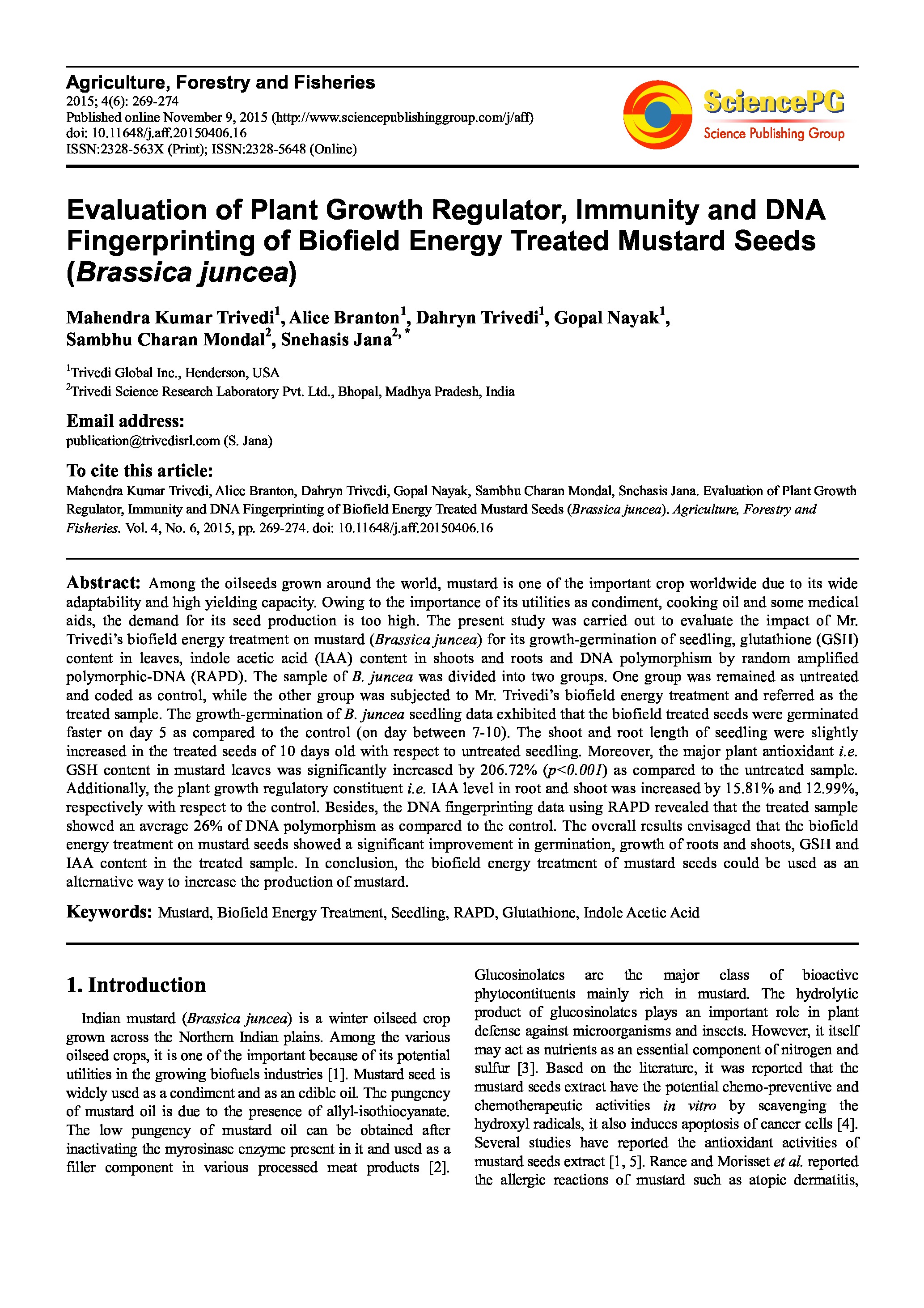Evaluation of Plant Growth Regulator, Immunity and DNA Fingerprinting of Biofield Energy Treated Mustard Seeds (Brassica juncea)
Affiliation
Trivedi Global Inc.; Trivedi Science Research Laboratory Pvt. Ltd.
Main category
Natural Sciences (Biology)
Abstract
Among the oilseeds grown around the world, mustard is one of the important crop worldwide due to its wide adaptability and high yielding capacity. Owing to the importance of its utilities as condiment, cooking oil and some medical aids, the demand for its seed production is too high. The present study was carried out to evaluate the impact of Mr. Trivedi’s biofield energy treatment on mustard (Brassica juncea) for its growth-germination of seedling, glutathione (GSH) content in leaves, indole acetic acid (IAA) content in shoots and roots and DNA polymorphism by random amplified polymorphic-DNA (RAPD). The sample of B. juncea was divided into two groups. One group was remained as untreated and coded as control, while the other group was subjected to Mr. Trivedi’s biofield energy treatment and referred as the treated sample. The growth-germination of B. juncea seedling data exhibited that the biofield treated seeds were germinated faster on day 5 as compared to the control (on day between 7-10). The shoot and root length of seedling were slightly increased in the treated seeds of 10 days old with respect to untreated seedling. Moreover, the major plant antioxidant i.e. GSH content in mustard leaves was significantly increased by 206.72% (p<0.001) as compared to the untreated sample. Additionally, the plant growth regulatory constituent i.e. IAA level in root and shoot was increased by 15.81% and 12.99%, respectively with respect to the control. Besides, the DNA fingerprinting data using RAPD revealed that the treated sample showed an average 26% of DNA polymorphism as compared to the control. The overall results envisaged that the biofield energy treatment on mustard seeds showed a significant improvement in germination, growth of roots and shoots, GSH and IAA content in the treated sample. In conclusion, the biofield energy treatment of mustard seeds could be used as an alternative way to increase the production of mustard.
Do you have problems viewing the pdf-file? Download paper
here
If the paper contains inappropriate content, please
report the paper. You will be redirected to the landing page.
